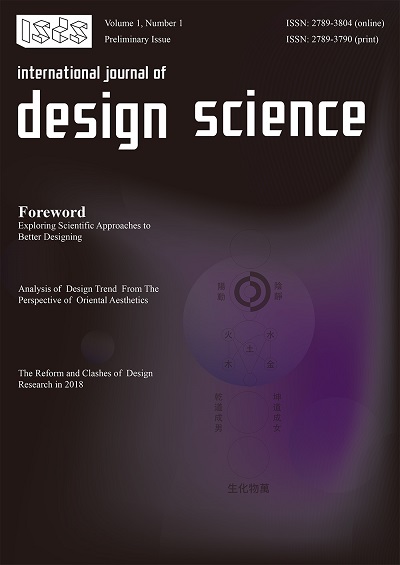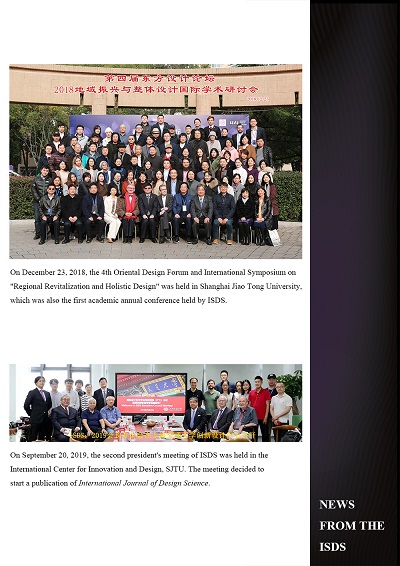



Within the context of cultural globalization, contemporary Chinese design needs to be particularly clear about three things: the cultural context on which it shall be based, the perspective from which it understands target groups, and the path by which it finds and solves problems. From the perspective of oriental design, the construction of contemporary Chinese design must be based on Chinese culture and take it as the cultural standpoint. It also must uphold the aesthetic perspective and experience of oriental aesthetics. Moreover, it must always maintain a dialectical attitude of learning and understanding towards different cultures, perspectives and techniques, and learn from each other's strengths so that Chinese design can truly meet the material and spiritual needs of the audience in the form of “things”. By comparing and analyzing the basic standpoints and perspectives of Oriental aesthetics, this study discusses the current boundary problems of Chinese design. By examining the characteristics of Oriental design that bases its standpoints and ideas on Chinese aesthetics, it explores the development direction and trends of Chinese design. Through the analysis of oriental design and the construction of the boundary of Chinese design, it strives to further establish the cultural confidence of Chinese design and locates the sound development of Chinese design in the future.
The author of this paper analyzes the significant events in design circles in 2018. Theoretical achievements of important academic values are sorted out and summarized from both macro and micro aspects on the premise of encountering social changes and difficulties in design theory research. The personal academic perspective is placed in the background of the commemoration of 40th anniversary of reform and opening up. It is considered why the leading research of design theory generally lags behind design practice, emphasizing that it is urgent to update the knowledge of design theory, to get rid of the old research approaches, to face the prospect of design, to broaden the research horizon and to construct a new research paradigm.
Objective Under the background of big data, this paper analyzes the visual construction of the data relationship. Method Combining with the related theory of cognitive psychology and graphic design, this paper aims to summarize the design principles of data visualization. Conclusion Big data visualization should follow six design principles, namely, accuracy, intuition, vividness, image reading, simplicity and dynamic hierarchical information presentation, and the future big data information visualization will develop towards the interactive, dynamic orientation.
Persuasive systems have been developed in the fitness context using gamification to motivate people being more active in daily life. Research has shown that gamification of health and fitness can benefit both novice and professional users alike, and result in short-term engagement as well as long term improvement through intelligent game-based objectives. However little studies have been conducted to understand the perception or subjective feeling of user about gamification element specifically in fitness setting. This exploratory study used a pilot prototype gamified fitness system which was developed by OVERHAND Fitness Shanghai for the experiments. Five group-gamified HIIT (High Intensity Interval Training) sessions were conducted with four users per session under conventional HIIT setting and the gamified HIIT setting. Experiment was conducted with the aims to provide answers on the perception of user on gamification in a gamified HIIT workout in terms of gamification, performance, system’s software and hardware and how fitness routine influences their perception by understanding their feeling of enjoyment, pain points and achievements through experiment observation and interviews. Findings showed that gamification in fitness is perceived positively due to its novelty, and its competitive element. However, technological, physiological state of user, knowledge and experience are vital variables for positive perception. Recommendation and further related research are stated for better development of gamified fitness system in the future. Keywords: Gamification; perception; fitness-routine; fitness and digital.
Prof. Frank Hartmann, vice president of the International Society for Design Science (ISDS), former dean of the School of Design at Bauhaus university in Weimar, and chairman of the school’s academic committee, passed away on July 27, 2019. We deeply mourn him. Besides, we are committed to redouble our efforts to promote the Bauhaus concept and spirit in the theoretical and practical system of Oriental design.